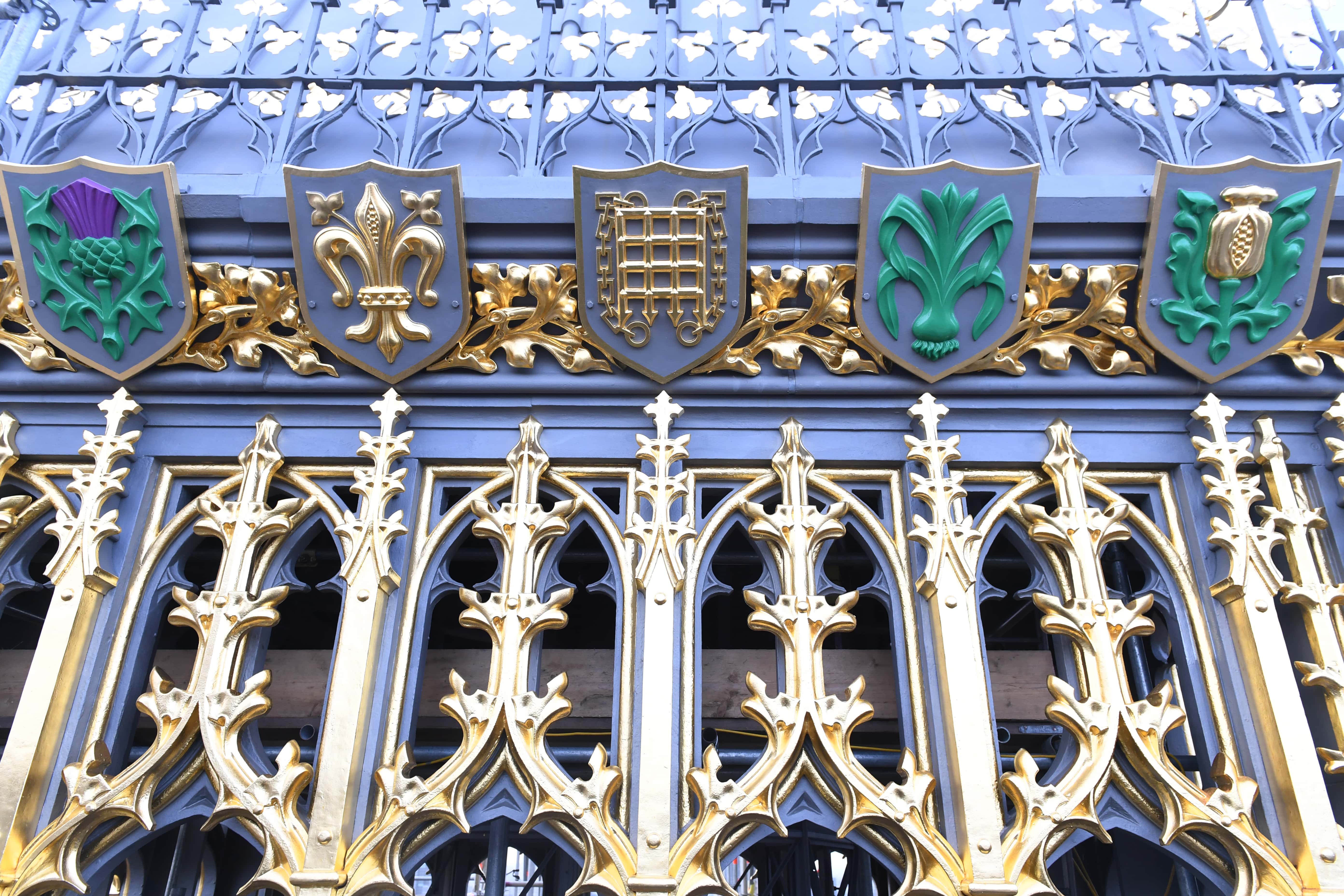Turning Big Ben’s clock dials blue
Extensive research has uncovered the original design of the Elizabeth Tower - so we reinstated the architects' vision.
Completed in 1859, the design of the clock tower was undertaken by Charles Barry, the architect of the Gothic Revival Palace of Westminster. Barry also created the intricate ironwork for each of the dials and chose the original colours that have since been covered in layers of paint.
When the Elizabeth Tower project team started the most extensive conservation in the clock tower’s history, the goal was clear but also complex. They wanted to bring the Tower back to the original design and vision by architects Charles Barry and Augustus Welby Pugin.
Uncovering the past in depictions and paint
The Architecture and Heritage team in Parliament worked with a team of paint experts at Lincoln University to analyse over 160 years of paint applied to the clock tower.
Looking at each layer of paint, the team identified six different colour schemes used over the years. These were compared with the original drawings for the building which are held in the Parliamentary Archives.
For years the clock dials and the stonework surrounding them were painted in many layers of black paint that most of us associate with Big Ben. We believe this colour scheme was chosen in the 1930s to mask the effects of pollution.
Painstaking work has removed the paint from the stone, using solvents, tiny brushes and lots of elbow grease so Barry’s original design can be reinstated. Rhiannon Clarricoates ACR, Senior Research Fellow at the University of Lincoln said: “It has been a privilege working on such an iconic building and being able to see the historic colours unfold. It was fantastic to work with the in-house teams at Parliament, as well as Purcell, Sir Robert McAlpine, and Cliveden Conservation to pull all of the various pieces of evidence together which then allowed us to see how this magnificent building would have originally appeared.”
The ‘new’ old colour scheme
Adam Watrobski, Principal Architect and Head of Architecture and Heritage at the Houses of Parliament, has been leading this work.
“Using historic paint analysis and references including Barry’s original design watercolour, contemporary illustrations and archival photographs, we have recreated the original colour scheme. The dials and clock hands are Prussian blue and gold and the adjacent areas make use of the red, white and blue colours of the Union flag,” he said.
The black paint on the stonework around the clock dials has been removed and certain features have been gilded again. New white opalescent glass has been installed after the metalwork was cleaned and repainted.
Other key details have also returned to Barry’s original design, such as the row of six shields above each dial that displays St George’s red cross on a white background.
Symbols of the four nations of the United Kingdom
Above the Great Clock sits the Ayrton Light, a lantern which shines when either House of Parliament is sitting. Mounted on the roof above the lantern are heraldic shields.
Floral emblems of all four parts of the United Kingdom show the rose, thistle, shamrock and leek alongside a gold portcullis that symbolises Parliament.
The Irish shamrock and Welsh leek have been returned to their original green while the Scottish thistle is green with a bright purple seed head. The English rose has been painted red and white as in Barry’s original design.
The clock tower glistens when the sun shines
On the roof and stonework of the building, gilders have reinstated the original design so the clock tower now glistens in the sun as it did in Victorian times.
“The areas that have been regilded closely match those that were originally gilded in 1859. These have not changed significantly during the life of the Tower. This is very much the crowning glory of this important project and will certainly serve to reinforce the symbolism of the Tower in its international representation of the United Kingdom,” Adam Watrobski said.

